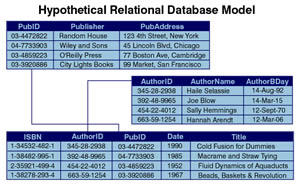Difference between DBMS and RDBMS
Key Difference: A DBMS is used for storage of data in files. In DBMS relationships can be established between two files. Data is stored in flat files with metadata whereas RDBMS stores the data in tabular form with additional condition of data that enforces relationships among the tables. Unlike RDBMS, DBMS does not support client server architecture. RDBMS imposes integrity constraints and also follows normalization which is not supported in DBMS.

DBMS and RDBMS both are management systems referring to collection of programs that are required to manage a database. In spite of this similarity major differences occur between them. DBMS stands for database management system whereas RDBMS stands for relational database management system; these softwares are created to maintain and utilize large scale collection of data in an efficient manner. Database management systems were introduced by Charles in 1960 whereas relational database systems were founded by Dr. E.F.Codd of IBM's San Jose Research Laboratory in the year 1970.
DBMS manages large quantity of structured data with the advantages of query processing, controlling the access to data, data sharing and proper retrieval as well as modification of data. RDBMS is a DBMS that stores the data in tables; a table is a collection of interrelated data entries and consists of columns and rows. Each of these tables has a unique identifier or "primary key". RDBMS also stores the relationship among the data in the form of tables. In hierarchical model of DBMS data is organized as an inverted tree; in which each entity has only one parent node but with the possibility of several children nodes. In network model of DBMS the entities are organized in a graph and paths are defined in order to access the entities. In Relational model of DBMS data is organized in two dimensional tables called as relations and RDBMS is based on this particular relational model. A DBMS qualifies to be a RDBMS if it follows 13rules defined by Dr.E.F.Codd. These rules are described as-
 Rule 0: The system must fulfill the condition of being relational as a database and also as a management system.
Rule 0: The system must fulfill the condition of being relational as a database and also as a management system.
Rule 1: All information must be represented by values in column positions.
Rule 2: Each and every value must be accessible.
Rule 3: Null values must be systematically treated.
Rule 4: Active online catalog must be based on relational model.
Rule 5: presence of at least one language comprehensive in supporting data definition, view definition, data manipulation, security and integrity constraints, authorization and transaction boundaries.
Rule 6: System must be able to update the theoretically updateable views.
Rule 7: System must support High level insert, update and delete.
Rule 8: System must possess physical data independence.
Rule 9: System must possess logical data independence.
Rule 10: Integrity constraints must be specified separately from application programs.
Rule 11: Distribution of portions of the database to different locations must remain invisible to the users.
Rule 12: A low level language must not be used to subvert or bypass the integrity rules and constraints that are expressed in higher level relational language.
DBMS can be used for simple applications whereas its next generation design i.e. RDBMS can be used for complex business applications. IBM's Information Management System (IMS) is an example of DBMS and Microsoft SQL Server is an example of RDBMS.
Image Courtesy: platconsulting.com, ibm.com









Comments
It is very usefull to all,thanks to you.
naresh
Tue, 12/24/2013 - 08:00
Add new comment